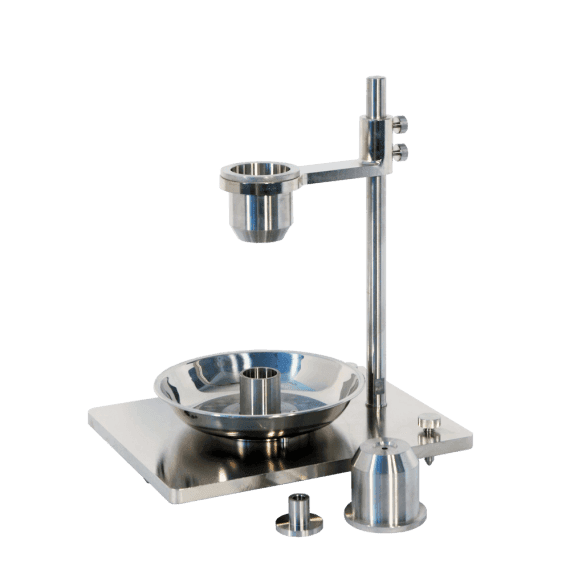Bettersize Instruments Ltd. Bettersizer 2600 Laser Diffraction Particle Size Analyzer
- Bettersizer 2600 is a powerful and versatile particle size analyzer operating according to laser diffraction methods and complying with the ISO 13320 standard.
- Our three patented technologies open up new possibilities for almost every industry and application, with a wide measurement size range that allows users to examine materials from 0.02 μm to 2600 μm. With its modular design, both wet and dry measurements can be performed in a single instrument and software, ensuring data integrity.
OPTICAL SYSTEM PROPHECIES
- Stable optical system with high resolution and sensitivity.
- High signal-to-noise ratio for ultra-fine particles.
- Wide measurement range: from 0.02 μm to 2600 μm.
- Single laser system (635 nm) – no mixture of different wavelengths in the spectrum.
High Resolution
The Bettersizer 2600 can separate different materials with various particle sizes in a single measurement due to its high resolution.

High Sensitivity
By incrementally adding one sample to another, the Bettersizer 2600 shows changes in particle size distribution along a curve, confirming its excellent sensitivity.
- FURRY AND REVERSE FURRY DESIGN COMBINATION
The Bettersizer 2600 is a perfect combination of Fourier and inverse Fourier designs. This clever design allows, on the one hand, to detect extraneous light over a very wide angle range from 0.016° to 165°. On the other hand, in contrast to the inverse Fourier design, the particles do not have to be in the same plane – thus achieving simultaneous accurate measurement of small and large particles.- Features
- Spherical detector array: Front, side and back detectors, in all 92 parts;
- Very large Fourier lens;
- Small footprint: Compact design to save space.
- Features
- TILTED SAMPLE CELL
- What is the total internal reflection reaction?
- The reflection of light that occurs when it strikes an interface with a charging angle greater than the critical angle of the couple device.
- How to reduce the effect of total internal reflection?
- By tilting the sample cell, the angle of reception of the incident light increased to reduce the effect of total internal reflection.
- Advantages of a tilted sample cell
- Significantly reduces the effect of total internal reflection;
- Wide measuring range due to large angle of reception of scattered light.
- FOLDING BOX MEASUREMENT
- According to Mie theory, laser diffraction measurements are difficult for the following sample types:
- Samples with completely unknown complex flexibility;
- Samples with heterogeneous chemical composition;
- Samples with significantly different optical properties of the particles compared to the bulk material;
- Samples with clearly strong optical scattering (low Abbe number).
- Measuring the folding index is one of the best solutions. The Bettersizer 2600 can:
- Determine flexibility for samples with unknown flexibility;
- Measure samples with unknown properties;
- To check known material data for a given wavelength of light;
- Provide basic parameters for calculating particle size distribution in real time.
- Advantages of moisture measurement:
- More stable measurement results compared to dry measurements;
- Repeatability testing capability;
- Suitable for very fine particles and fragile samples.
- Advantages of dry measurement:
- Quick measurements;
- No need for surface activator, low cost and environmentally friendly;
- Suitable for samples that are easily dispersed and not fragile.
- Less variability during the measurement process.
- According to Mie theory, laser diffraction measurements are difficult for the following sample types:
Laser Diffraction Particle Size Analyzers – Bettersize
More information: on the manufacturer's website or send us an inquiry!








